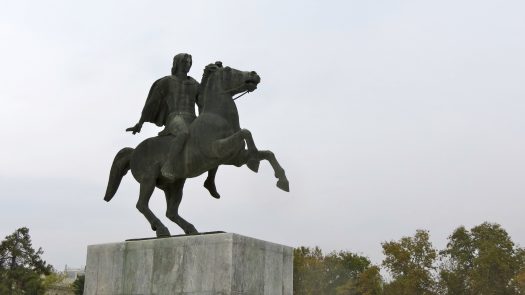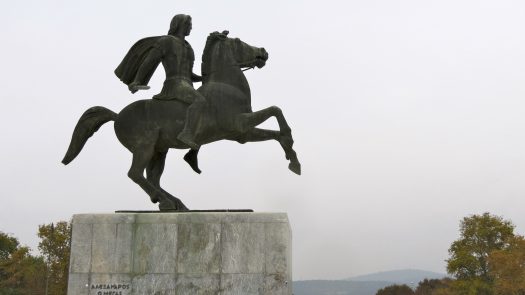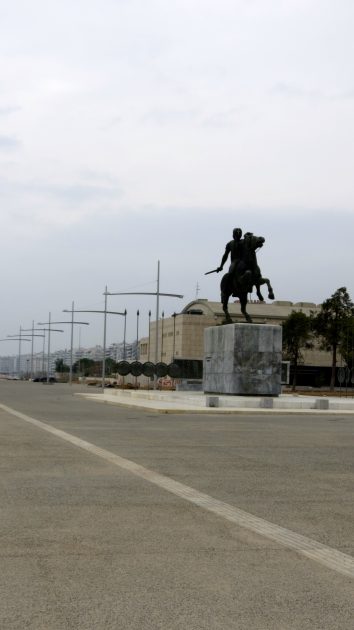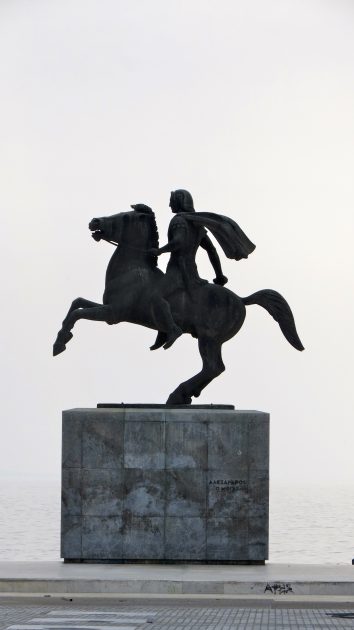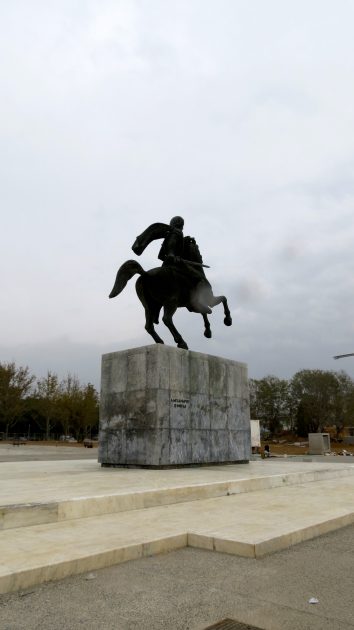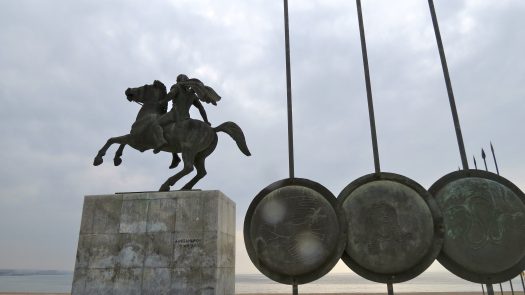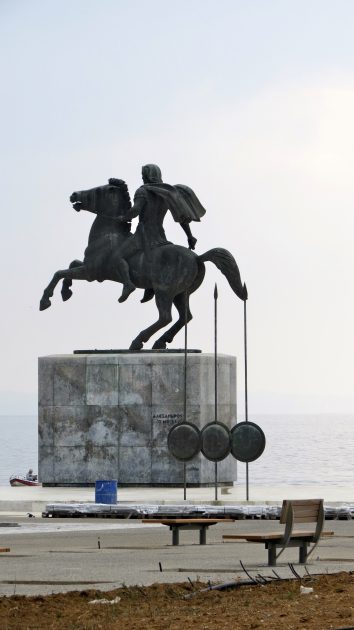- CountryGreece
- Town:Thessaloniki
-
Year of creation:1974
- Rider(s):Alexander the Great
(356 BC –323 BC), was a king of the ancient Greek kingdom of Macedon. He succeeded his father Philip II to the throne at the age of 20 and spent most of his ruling years on an unprecedented military campaign through western Asia and northeast Africa, and by the age of thirty, he had created one of the largest empires of the ancient world, stretching from Greece to northwestern India. He was undefeated in battle and is widely considered one of history’s most successful military commanders.
During his youth, Alexander was tutored by Aristotle until age 16. After Philip’s assassination in 336 BC, he succeeded his father to the throne and inherited a strong kingdom and an experienced army. Alexander was awarded the generalship of Greece and used this authority to launch his father’s pan-Hellenic project to lead the Greeks in the conquest of Persia. In 334 BC, he invaded the Persian Empire and began a series of campaigns that lasted 10 years. He overthrew Persian King Darius III and conquered the his empire in its entirety. At that point, his empire stretched from the Adriatic Sea to the Beas River.
Alexander endeavoured to reach the “ends of the world and the Great Outer Sea” and invaded India in 326 BC, winning an important victory over the Pauravas at the Battle of the Hydaspes. He eventually turned back at the demand of his homesick troops, dying in Babylon in 323 BC. In the years following his death, a series of civil wars tore his empire apart.
He founded some twenty cities that bore his name, most notably Alexandria in Egypt. Alexander’s settlement of Greek colonists and the resulting spread of Greek culture in the east resulted in a new Hellenistic civilization, aspects of which were still evident in the traditions of the Byzantine Empire in the mid-15th century AD and the presence of Greek speakers in central and far eastern Anatolia until the Greek genocide of the 1920s. Alexander became legendary as a classical hero, the measure against which military leaders compared themselves. Military academies throughout the world still teach his tactics. He is often ranked among the most influential people in history.
- Sculptor(s):Moustakas, Evaggelos
(1930) is a Greek sculptor who studied in Florence
-
The sculptor V. Moustakas recounts :
“Ever since I was a child, I had imagined Alexander the Great equestrian and dashing – a hero of myth! I had been preoccupied with the subject since 1960-61 without dreaming of any competition. The equestrian figure interests me because it provides great opportunities for composition. Thus, for the monument I designed a Sculpture Space. I geometrized the forms on the equestrian figure so that they will withstand the test of time. I wanted a horse outside reality – a ‘beast’. Alexander riding the rearing horse with ease, sitting as if on his throne, and that is what I was after in my final study. I wanted to depict him grand and imposing, dashing, and as if following a vision – these were the characteristics of Alexander the Great. He turns, holding his sword, a symbol with which he cut the Gordian Knot.
The equestrian figure is inscribed in a circle which rests on the rectangular parallelepiped marble base. It is a daring and difficult subject- a lot of studies were needed. The technical difficulties of its support were enormous. The centre of gravity had to be found. I’m interested in all the details: the horse’s tail, its direction, the materials coming out from the armpit, the cape – a feature of great beauty, which interests me a lot and studied the centre of gravity at length so that it would have the right balance and the figure, weighing five tons, should weigh perfectly at the centre and almost hover! The static study was precise: each square metre of surface area can take 36 tons of wind pressure – let’s not forget the Vandaris and the earthquakes which it has already withstood.
What concerns and interests me is not only the equestrian figure, but also the things that frame the central feature: sarissas, shields, and their shadows. I want them to operate as mirages. I like the round parts of the shields in relation to the right-angled shapes, like the base and the piers on the pedestal. I wanted them to operate in a vertical manner, powered by the sun’s trend and transform stillness into movement. The sarissas, together with the shield-circles, arranged in groups of five and three, the symbols of Medusa being engraved in relief – a snake, an eagle, a hawk, a bull. Indicative badges of the military corps of Alexander”.
